- News
- Reviews
- Bikes
- Components
- Bar tape & grips
- Bottom brackets
- Brake & gear cables
- Brake & STI levers
- Brake pads & spares
- Brakes
- Cassettes & freewheels
- Chains
- Chainsets & chainrings
- Derailleurs - front
- Derailleurs - rear
- Forks
- Gear levers & shifters
- Groupsets
- Handlebars & extensions
- Headsets
- Hubs
- Inner tubes
- Pedals
- Quick releases & skewers
- Saddles
- Seatposts
- Stems
- Wheels
- Tyres
- Tubeless valves
- Accessories
- Accessories - misc
- Computer mounts
- Bags
- Bar ends
- Bike bags & cases
- Bottle cages
- Bottles
- Cameras
- Car racks
- Child seats
- Computers
- Glasses
- GPS units
- Helmets
- Lights - front
- Lights - rear
- Lights - sets
- Locks
- Mirrors
- Mudguards
- Racks
- Pumps & CO2 inflators
- Puncture kits
- Reflectives
- Smart watches
- Stands and racks
- Trailers
- Clothing
- Health, fitness and nutrition
- Tools and workshop
- Miscellaneous
- Buyers Guides
- Features
- Forum
- Recommends
- Podcast
Would Pogacar win the Tour de France on a cheaper bike? Mid-range road bike vs superbike speed tested
For a pretty price, it's possible to own the very same top-of-the-range road bikes that are being raced by the pros at this year's Tour de France. These top-tier bikes can very often carry a five-figure price tag, but are they really much better than the mid-range offerings?
> Tour de France bikes on a budget
To find out, we set about testing two competitive options from both categories before diving into the data to see whether Pogacar would still be in yellow if he was to swap in his V4Rs for a mid-range offering...
The competitors
It just so happens that we've recently finished reviewing two bikes that fit the bill very nicely:
> Van Rysel RCR Pro - The story behind 2024's most talked about road bike
Representing our mid-tier option is the Van Rysel RCR Rival AXS. It has carbon Zipp wheels (303s), an electronic Sram groupset (Sram Rival AXS), a power meter and a frame sculpted by the wind. It has been widely lauded for its value for money.
It’s going up against a Canyon Ultimate CFR. It too has carbon Zipp wheels (303 Firecrests), an electronic Sram groupset (The latest Sram Red AXS), a power meter, and has been created using an “exhaustive process of wind tunnel testing”.
Clearly, there is going to be quite a difference in price between these two road bikes... and well, you’d be right. The Van Rysel, in this exact spec, is available to purchase for £4,500. The Canyon, which is the same spec as Movistar and Alpecin Deceuninck are using in the mountains at this year's Tour de France, will set you back a cool £9,749.
That means that the Ultimate CFR is over twice the price of the RCR... but is it twice the bike? We’re going to try to find out!
PS: Before we get started, this article and video is by no means a dig at Canyon, or top-tier bikes in general. Van Rysel also makes a pro-level bike that costs twice as much as the one we’ve used in the test and many of the other bikes at this year’s Tour de France will cost you upwards of £12,000! It just so happened that it was these two bikes that fit the bill for our test.
'Diminishing gains'
The other day I drew this rather rudimentary graph, and said that spending more than around £3,000 is about as much use as a handbrake on a canoe. I also said that Pogacar could win the 2024 Tour de France on a four-grand bike, something that might age very badly but for now, I stand by!
But in all seriousness, surely there is a measurable, significant difference between a superbike like the Canyon and a mid-range bike like the Van Rysel? Otherwise, why would anyone ever buy the range-topping models?
> Sram Red AXS vs Shimano Dura-Ace: which groupset is best?
To get some more concrete data than just listening to the word on the street, we’re going to compare a few things: their speed around a flat circuit at a set wattage, and how fast they can climb in an all-out TT uphill.
The hill climb test
We’ll start off with a climbing test, because usually as you spend more the most noticeable difference is weight saving.
For example, the higher-end Sram Red AXS groupset on our superbike is lighter than the third-tier Rival AXS on the mid-range bike. The wheels are also lighter, and indeed the frame is too.
> 10 cycling trends NOT to copy off the Tour de France pros
Before we get started, it's worth pointing out that we selected these bikes because they have components (groupsets and wheels) from the same brand. They're both size medium, and we were also able to use the adjustable cockpit on the Ultimate CFR to match the handlebar width to the RCR.
As you'd expect, the Ultimate CFR is indeed lighter, right on the UCI weight limit at 6.8kg in fact. The RCR, meanwhile, is not tickling the weight limit at 7.91kg, but it doesn't feel ridiculously heavy either.
So far then, that extra £5,249 has saved us around 1kg. How much difference does that actually make on a climb?
> Lightweight v aero: which is best?
To find out, we selected a local climb with a gradient similar to that of the Galibier, as that's where we've seen some of the biggest time gaps at this year's Tour de France, and marked the start and finish points.
Our climb is 1.8km long, but despite being about 13 times shorter than the Galibier we hope that it will still give us a representation of how much faster, if any, our superbike is.
Results
Ok, so test complete and the results are perhaps closer than expected. The first effort I did was on the Van Rysel, and over our 1.8km climb I clocked a time of 4:46. Not exactly peak Pogacar...
Despite probably being a little fatigued, I then hopped on to the Canyon and completed the climb four seconds quicker in a time of 4:42.
Obviously, to try to balance out the effects of fatigue I then did the test again, this time with the Canyon first. On this run I clocked a time of 4:45, slower than my first effort but five seconds faster than I’d then do on the mid-range bike.
> How much faster is an expensive road bike?
Disclaimer: we realise that just like with any real-world testing, it's impossible to remove all variables. I have since plugged the numbers into Bike Calculator, and it does seem feasible that I would be a few seconds quicker on a bike that is a kilogram lighter.
Flat test
Most people actually looking to spend their own money on either one of these bikes probably aren’t the type of person who is racing up the Galibier on the daily, so it’s potentially more important to find out which one is faster on the flat.
To do that, we found ourselves a flat traffic-free loop that measured 10km, cleaned the dribble off the bikes from the hill climb efforts and calibrated my power pedals.
> 6 of the best value bike upgrades
Rather than trying to ride as fast as possible, this test would require riding at a constant 250 watts. We'd also set off from a rolling start so that I didn't spanner up the results trying to clip in or accelerate.
Results
Alright, results time! Our flat course was a grand total of 10 kilometres long with an elevation gain of just 34 meters. When we say flat we really do mean flat! To be honest it’s really hard to say that we found anything conclusive...
I took the Canyon first this time. I clocked a time of 17 minutes and 50 seconds.
The first effort on the RCR I was actually faster with a time of 17 minutes and 40 seconds. However, I then did the test again and was slower on both bikes, clocking times of 18:01 and 18:06 respectively. What can we glean from this then? Well, only that the difference in speed between the two bikes is way less than the margin of error of our test.
To be honest I wasn’t expecting to see any huge differences between the two on this test. Other than perhaps a fancy integrated cockpit, mid-range bikes very often share exactly the same frame shape and geometry as their more expensive counterparts.
> Tour de France bikes vs the bikes you can buy in the shops — are they actually the same?
I think we could have happily chosen all manner of manufacturers and not found a meaningful difference, or at least not as big as the one from making your body more aero, or switching to a set of deeper wheels.
Could Pogacar win the Tour de France on a mid-range bike?
Using our data and online tools such as Bike Calculator, we've calculated that a bike that is 1kg heavier would mean that Pog crossed the summit of the Galibier about 20 seconds slower, i.e. at an almost identical time to Remco Evenepoel. I think we know what that means: he would have likely still descended fastest and/or won the sprint for the line.
Combine this with the fact that the mid-range bike is not really any slower on the flat, and Pogacar's subsequent efforts proving that he is the man to beat, even with the cumulative fatigue of racing a heavier bike for three weeks I personally believe that he would still be in yellow.
Of course, don't expect the pros to be switching out their top-end bikes anytime soon. Grand Tours can be won and lost by a matter of seconds, so they'll still be going after every possible advantage, however small!
Let us know how much you think is sensible to spend on a performance road bike in the comments section below as well as whether our results were what you expected…
Jamie has been riding bikes since a tender age but really caught the bug for racing and reviewing whilst studying towards a master's in Mechanical engineering at Swansea University. Having graduated, he decided he really quite liked working with bikes and is now a full-time addition to the road.cc team. When not writing about tech news or working on the Youtube channel, you can still find him racing local crits trying to cling on to his cat 2 licence...and missing every break going...
Latest Comments
- mdavidford 8 min 55 sec ago
Obviously it means 'springing out of the bunch' on a critical sector. Or maybe it's referring to the time of year.
- David9694 55 min 53 sec ago
Car crashes through garden wall for second time in 18 months https://www.wiltshire999s.co.uk/car-crashes-garden-second-time/
- David9694 57 min 28 sec ago
Woman taken to hospital after flipping car onto roof in Trowbridge...
- A V Lowe 1 hour 39 min ago
Its blindingly obvious from the image that the DKE of the buses include the mirrors which extend to nearly reach the edge of the tarmac pavement on...
- Sredlums 2 hours 12 min ago
It's sad when being very good at your job - any job - isn't enough to earn a decent living. It shouldn't be that way....
- eeney 2 hours 24 min ago
Bont double wide wearer here. Even Lake, for me, are too narrow in the toebox and midfoot, but Lake work for a lot of people....
- ktache 2 hours 41 min ago
I seem to recall saint Chris being more on recent BBC road cycling coverage rather than less.
- chrisonabike 3 hours 53 min ago
I never heard of anyone having their leg sliced off / unexpectedly wiping out using a spoon brake, but discs...
- chrisonabike 3 hours 54 min ago
Meanwhile, in the Netherlands... (cycling to hospital, s''Hertogenbosch, Utrecht. Cycling to hospital and cycle parking, Assen)....
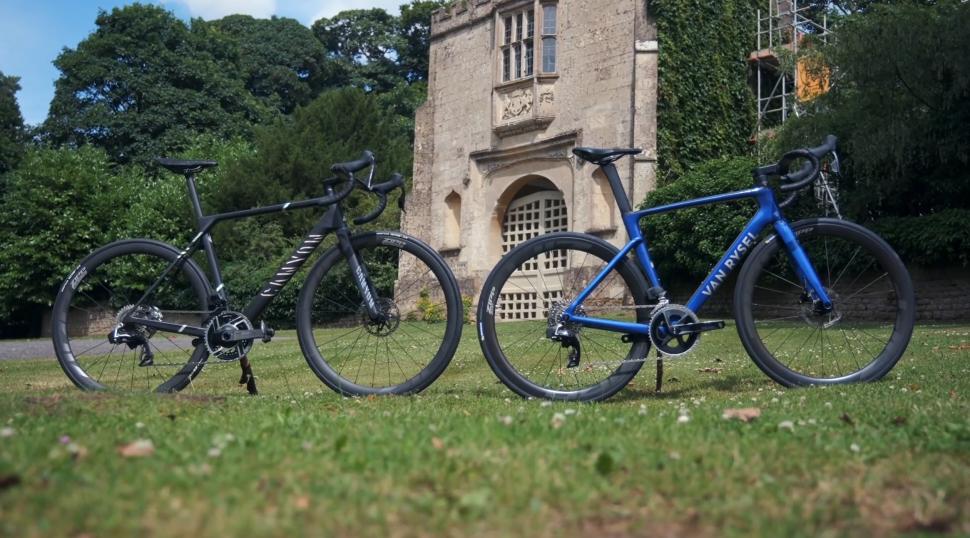

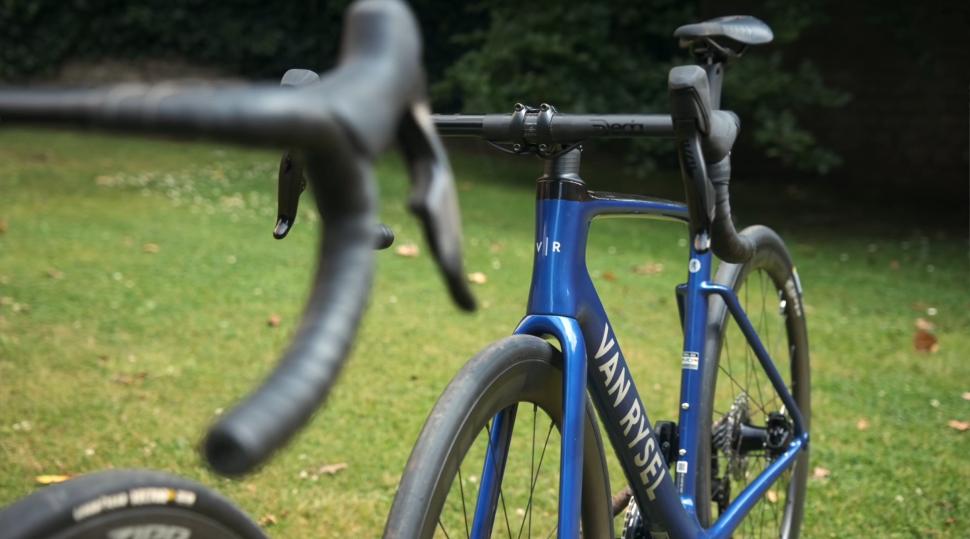
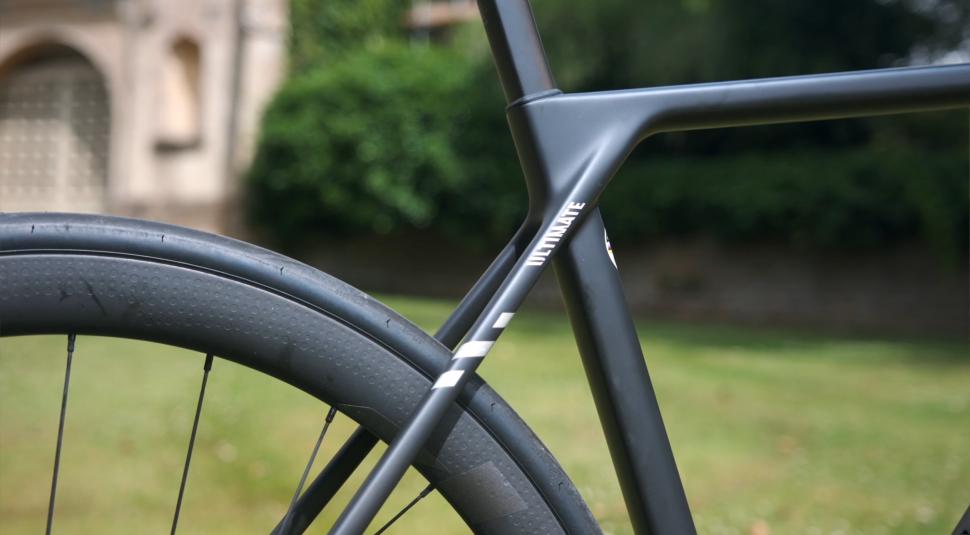
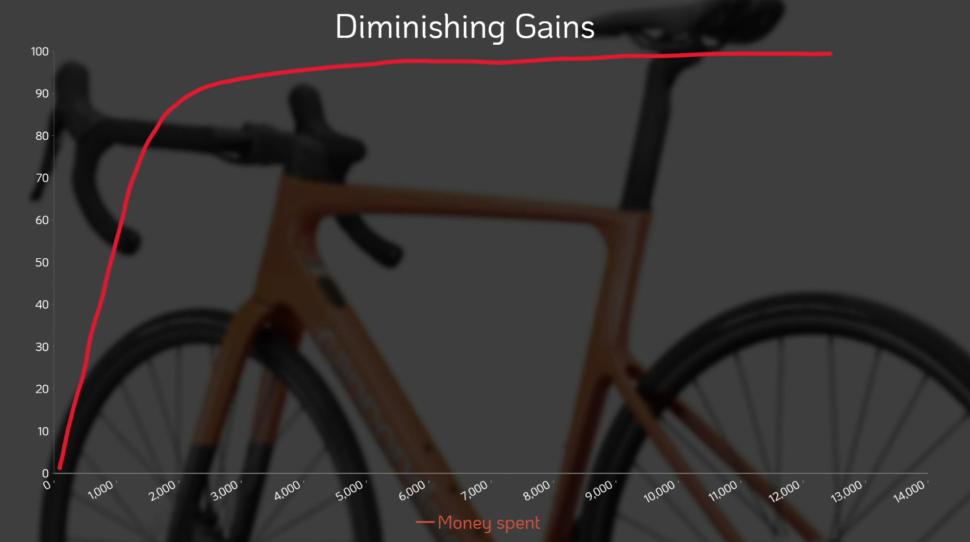
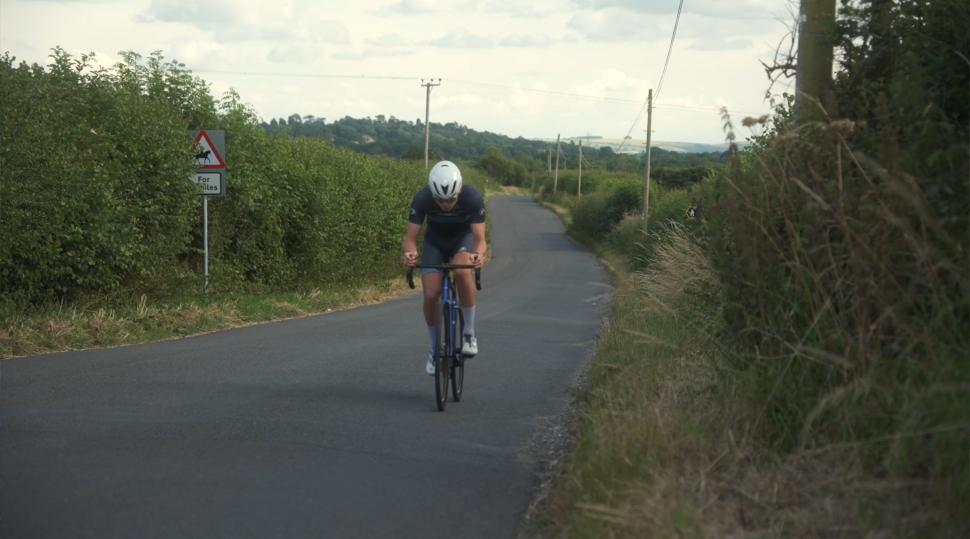
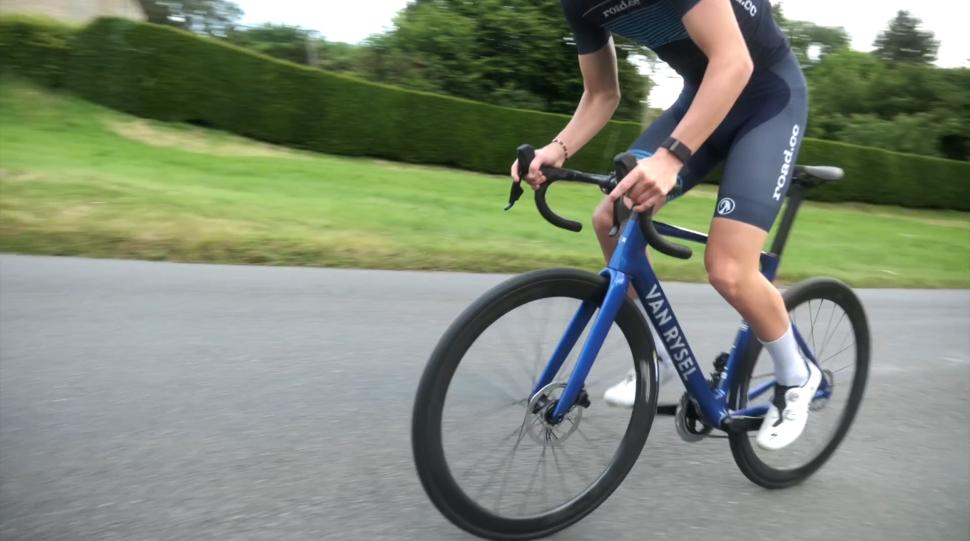
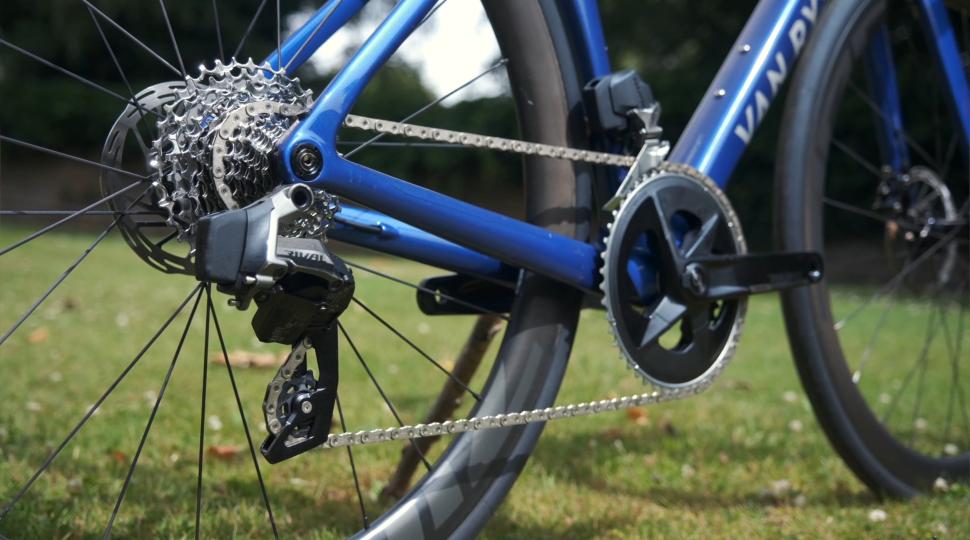

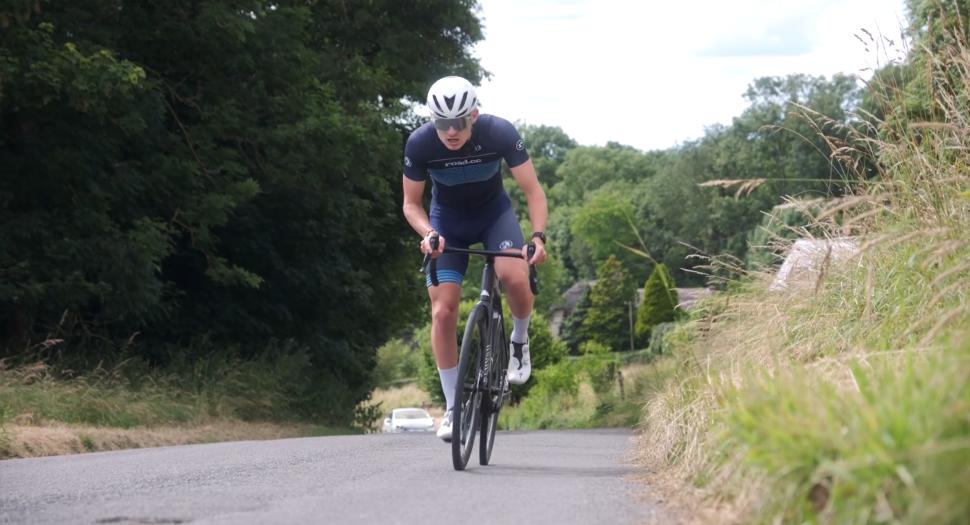


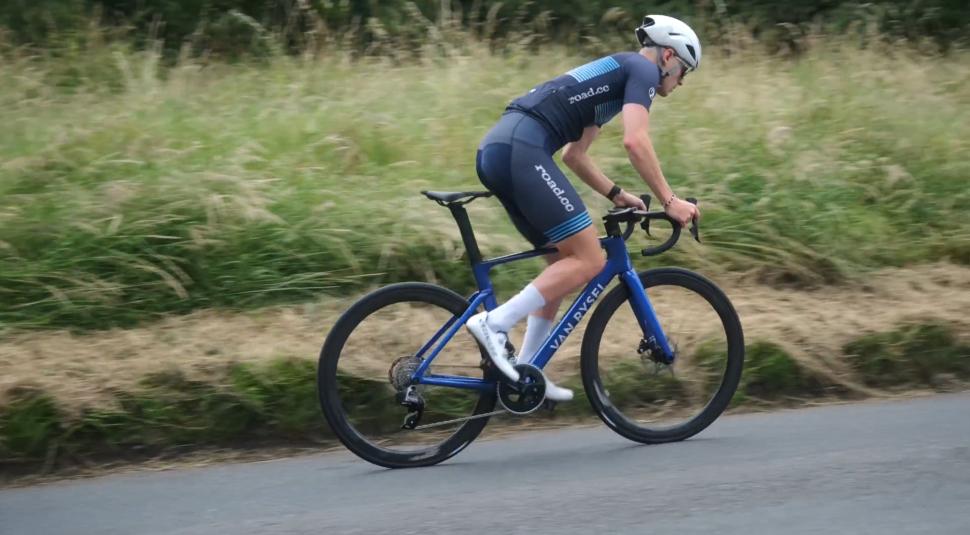
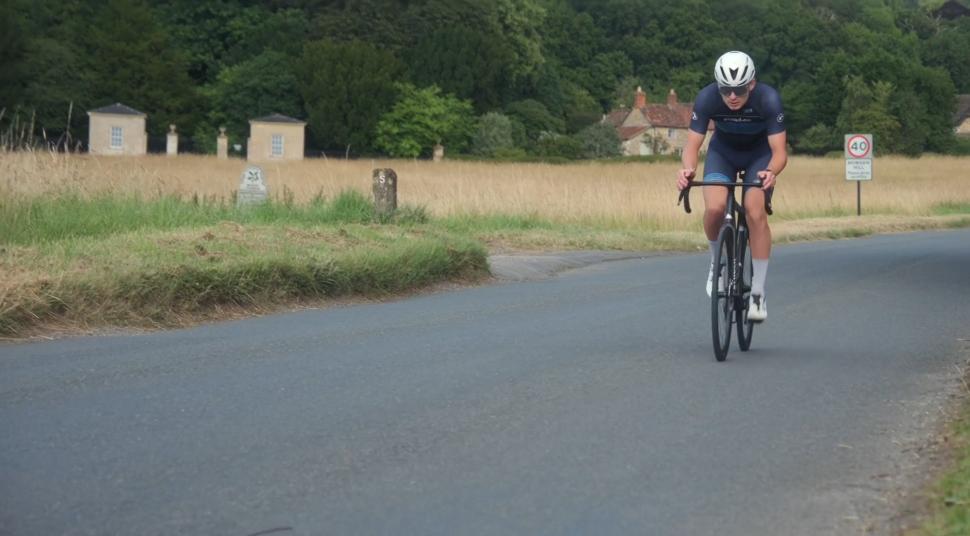
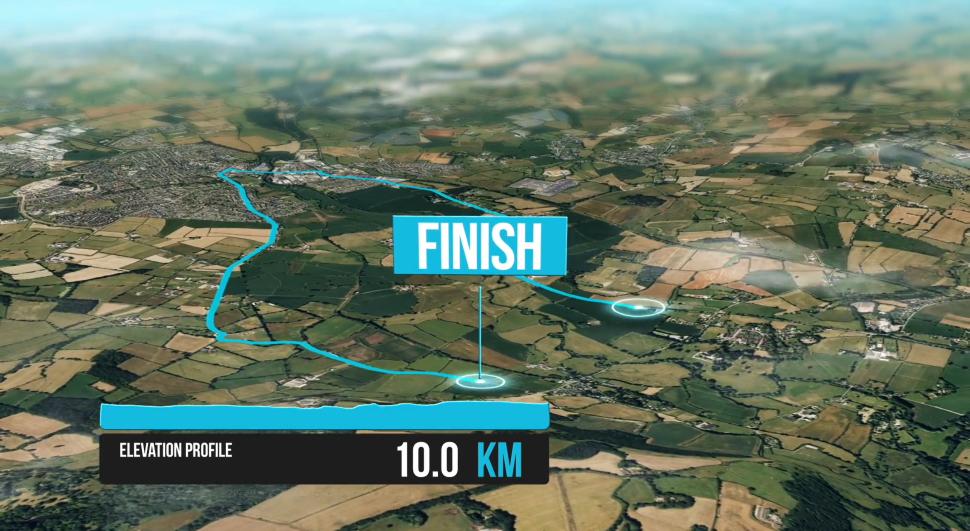

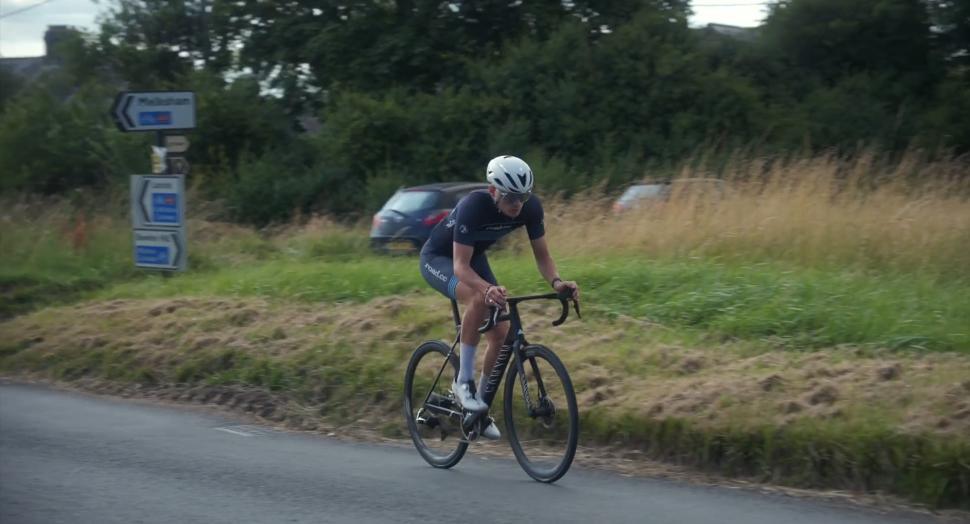

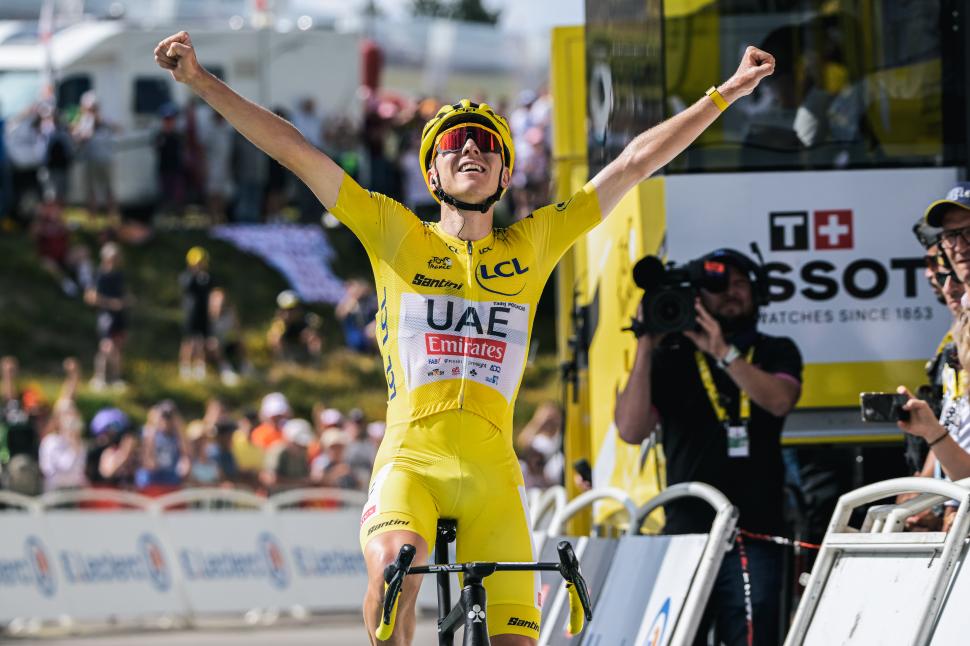
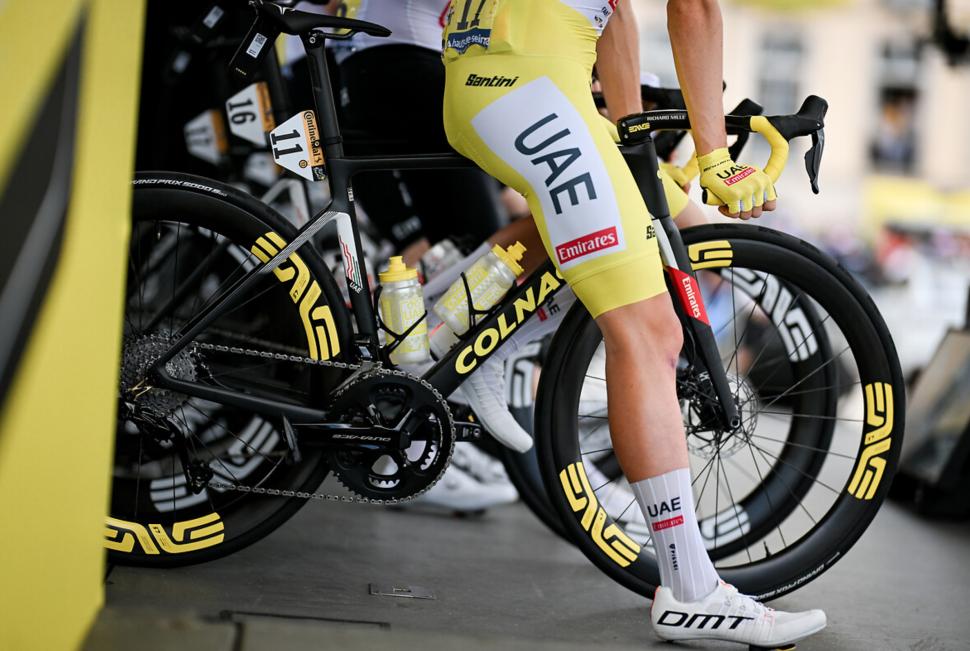
Add new comment
54 comments
I don't know, because I don't care, whether any tubular rim wheels are ready-made with discs- if they aren't, this would allow the 'look at me, I know what you and everyone else doesn't' contrarians a last-ditch and doomed attempt to kill 2 birds with one stone.
And I have used tubulars for exactly 0% of my rides since about 85, and have never missed them.
When I started racing again a few years ago I trusted the new wisdom the clinchers were better but I've since gone back to tubs because they are faster and I'm getting slower and need every advantage I can afford.
I've never used tubs, so am curious as to whether they're quicker than tubeless (not that I'm likely to use tubulars as the reliability of tubeless in terms of punctures is better). Found this article comparing them: https://bikexchange.com/clincher-vs-tubular-vs-tubeless-tires/
There's also mention in that article about Cycling Weekly's test of the speed of them:
https://www.youtube.com/watch?v=5NGnKMvZ5Ig
There are supposedly scientific tests that show both clinchers and tubs being faster, it probably shows that there are many variables that need to be tightly controlled and failing to do so can vary the results considerably. If you've never ridden tubs find a friend or club member who rides them and ask to borrow them, I find that the difference in feel is greater than the numerical differences in the various tests.
High quality clincher and tubeless tyres are faster now. From what I've read it seems that the brands haven't been investing in R&D for tubular tyres for a while.
It has been shown repeatedly that wider tyres are faster, even if they don't actually feel faster. It's why most pro teams are choosing to run 28mm or wider tubeless Vittoria Corsas or GP5000 TT TR tyres on wide rims.
https://velo.outsideonline.com/road/road-racing/tour-de-france/every-tir...
For 'real world' riding, especially on the poorly maintained roads that we have in the UK, I struggle to see why anyone would bother with skinny tubs when there are so many excellent alternatives.
Being able to ride away after fixing a puncture without worrying that the tyre might roll off in the next corner more than makes up for any hypothetical loss of ride quality.
He'd win on a 10 year old, mechanical 11 speed, rim brake bike with 23mm tubulars also
Like my 2007 Cannondale System6 Ultegra bought in clearance sale 2008 as it's half aluminium half carbon. The frame won 2007 Giro & 3 stages of TdF (1 mountain top, 2 sprint) under different riders on different teams. But... no, it wouldn't win on UK roads, maybe not in France, because ruts in roads now wide enough to swallow my 23c tyres
Not sure about that, definitely a 10 year old, mechanical 11 speed, rim brake wouldn't hold him back, but as I understand it 28 mm tires provide an approximately 15 W advantage over 23 mm so say 10% of his cruising speed, 2% of his attacking speed. The extra effort required to sustain his winning advantage, not to mention the additional fatigue associated with a less comfortable ride, might well take a pretty serious toll over a three week tour and make him more vulnerable.
Tubulars are more comfortable and compliant than clinchers/tubeless as the entire chamber is flexible under load. Having tried riding larger clinchers my rides are measurably faster on narrower tubulars and I prefer the feel
Tubulars are more comfortable and compliant than clinchers/tubeless...
This pro-tubular propaganda for tubulars is going the same way as the pro-rim brake propaganda- nowhere. There are a few more propagandists for rim brakes, but approximately 0% of people on here are riding tubulars and both minorities will eventually die out. Tubeless v. tubed still has some way to go and I may be in the minority on that
Having an opinion and expressing it is not propaganda. Rim brakes have clear advantages over disc brakes. Saying so doesn't make you a propagandist.
Rim brakes are in fact disk brakes, the rim is the rotor and pads are, well, the pads. All braking is about the tire's adhesion to the road, once the tires has reached max adhesion it doesn't matter if that was accomplished by rim or disk brakes. Of course in wet and or muddy conditions disk brakes are much more favorable, but even with a road bike in wet conditions if you have Kool Stop salmon-colored pads on they will stop very aggressively in the rain and the only thing slowing you down from stopping fast is the tire's adhesion to the road. Odd, we're back to the tire adhesion thing.
I am still riding on tubulars for 99% of rides
A lot depends on the quality of the roads you are riding on, but I believe that size for size on the same roads tubs are faster and more comfortable than clinchers. Using our local weekly club 10 as a testing ground I can run higher pressure in 23mm tubs than I can with 23mm clinchers (frame and forks won't take bigger tyres) without feeling that I am losing speed due to being shaken to bits. Also, nobody is suggesting that elite riders use 28mm clinchers at 70 PSI on the velodrome, its all tubs at 180+ PSI because the surface suits them. By choice on normal road rides I'll use 32mm clinchers at 65 PSI but although they are more comfortable they are not as responsive. Anecdotal Information but that is all most of us can supply to any of these debates.
You can equal the ride quality of tubulars with any of the Vittoria Corsa Pro series tires, depending if you want speed or puncture resistance, and then use latex tubes. The Vittoria Corsa Speed tire you will not tell the difference between a tubular, and with the others in the Corsa line you probably won't either.
I beg to differ, a pair of track wheels I bought second hand for training had corsa speeds on and they were rubbish for both speed and comfort, I swapped them out for Pista speed clinchers which were much better but still not as good as the pista speed tubulars even though I run the tubs at higher pressure. The absolute best were dugast silks which were awesome but expensive to run as the rear tyre struggles to last more than about 1000 miles
Well, the fact that I disagree with you quite rightly means nothing. The fact that every professional bike rider disagrees with you means quite a lot. If 21mm tubs were faster and more comfortable than 28mm tubeless you don't think the pros would still be using them?
Pro riders ride what they're given.
Also worth noting that my words didn't claim they were more comfortable, but that I prefer the feel. Big squishy tyres are definitely more comfortable, but they're also more vague. I prefer the involved feeling of the road beneath me, more than I do floating along slowly on pillows
Obviously they are generally confined to the bikes and components offered by their sponsoring manufacturers but they don't just "ride what they're given", they spend many hundreds of hours every year testing equipment to try and gain those few extra watts that will give them an advantage. By all means ride whatever tyres and wheels suit you best, but do you really believe that professional teams and riders who devote their lives to finding the marginal gains that will give them the edge over their competitors know that there is a faster alternative to the gear they use available but refuse to use it?
Didn't get much of a mention this year, but in previous years there were always many instances of the use of electrical tape and Sharpies...
It's not easy to turn a tubeless rim tubular with a sharpie though
Well, yes. Tubeless, clinchers, discs etc are all ciable technologies and have their respective places, but pro road cycling isn't really that place. Tubular rims are lighter, stronger, simpler to manufacture, the tyres are safer in the event of a puncture and arguably provide a better ride feel. The downsides (gluing, added cost, less easy roadside repair etc) are negated by pro team setups. The public doesn't buy tubulars because of those donwsides though, and manufacturers quite understandably want to sell their products, hence teams are using technology that is inferior as most sponsors have stopped producing new tubular rims. There's no other sport that is so dependent on what the sponsors are able to market
I would think that tubeless is safer in the event of a puncture as they don't tend to lose air so quickly. There's also the tyre inserts that they've started using so there's less chance of the tyre coming off and also allows them to continue cycling until they can get a replacement.
The number of blown tyres in the peloton in recent years would suggest otherwise. Pro teams also put a tiny amount of sealant in to reduce weight, just enough to make it airtight, they don't seem to care about the puncture protection benefits. You can put sealant in tubulars anyway, I've done it myself
So, if they don't care about the puncture protection benefits of tubeless, why do they use it if they're slower than tubs as you claim?
why do they use it if they're slower than tubs as you claim?
Clearly, it's because they're deluded dimwits who know much less about it than the real experts!
Marketing
You were doing fine until the bit I've highlighted.
You may not have seen the wind tunnel tests of some modern TL tyres on Roval's current wide rims compared to narrower rims and tyres; or the real-world tests with various tyre widths showing that wider tyres are nearly always faster. Dan Bigham used Conti GP 5000s TT tubeless tyres for his successful Hour record attempt, as did Filippo Ganna. Do you think Dan would choose a slower tyre? Not on your life.
Carbon rims are carbon rims and if you think that being simpler to manufacture is therefore better then you've surely not noticed the recent developments in carbon layup, integrated handlebars, BB types, custom aero extensions, skinsuit fabrics, 3D printing and many other areas.
Pages